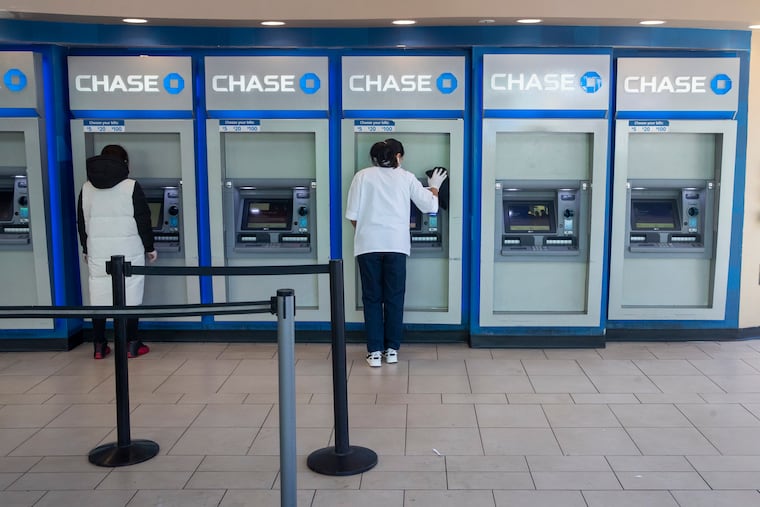Why most American bank accounts look great right now, despite everything
But there are signs that low-income families are beginning to fall behind.

Most Americans are significantly better off financially now than they were before the pandemic began, new bank-account data show, but there are signs that low-income families are beginning to fall behind.
Following surprisingly strong retail sales, consumer expectations and hiring numbers, new savings data through December 2021 from the JPMorgan Chase Institute point to a rapidly thawing economy, one that could shift into even higher gear as the omicron-fueled COVID-19 wave subsides and states continue to ease some COVID restrictions.
Americans are sitting on $2.6 trillion in extra savings, a separate Post analysis shows, and signs abound that they are opening up their wallets on long-delayed spending on travel, dining and other experiences that have been on hold since lockdowns swept the country almost two years ago.
High earners will drive much of that aggregate spending, said Fiona Greig, co-president of the JPMC Institute. They have an average of almost $1,300 more in their bank accounts than before the pandemic began, according to the institute's analysis of anonymized bank-account data for 7.5 million families. Families' retirement accounts and home equity also have soared.
For low-income families, the picture is mixed. They saw the largest proportional increase, as their balances are up about 70% from 2019 levels. But in the last three months, the balances of lower earners fell slightly, to an average of $1,288, in contrast with higher earners, whose balances kept gaining.
"Seventy percent elevated sounds really high, but in terms of dollar values, it's not a ton of cash," Greig said.
But for now, even low-income households still have a substantial savings from their stimulus and unemployment checks, data show, and a widely watched survey points to the sunniest consumer outlook going back to 2013.
Indeed, across the income spectrum, income and spending growth expectations have reached record highs, and the average probability of a missed loan payment is near record lows, said Gizem Kosar, an economist on the New York Fed's Survey of Consumer Expectations team.
To be sure, a spending spree could throw more fuel on an already hot economy and worsen the nation's biggest surge of inflation in four decades. Conflict in the Ukraine is already threatening to push up fuel prices, and raising the risk of cyberattacks that could newly snarl supply chains, said Diane Swonk, chief economist at Grant Thornton. If those disruptions coincide with a rush of spending on dining, travel and automobiles, policymakers could find themselves faced with a situation not seen since the 1970s.
Yet, there is potential for a substantial spending boom. Despite soaring inflation and multiple waves of COVID-19, crisis-era stimulus that added an estimated $1.7 trillion to U.S. incomes left many families on strong financial footing at the end of 2021.
American savings peaked in late March, after $1,400 checks from the American Rescue Plan hit bank accounts nationwide. The account of the typical family has fallen $700 to $900 in the months since, which still leaves most families at least $500 ahead, compared to pre-crisis levels.
In percentage terms, though, higher-income families are down less than 10% from their stimulus peak, while lower-income families are down almost 30% and have fallen further behind in recent months. And research shows that inflation has hit low-income families far harder than it has their high-income peers.
Rent inflation, in particular, “completely erodes the purchasing power of the extra few hundred dollars households may have in their bank accounts,” said Camelia Kuhnen, a University of North Carolina economist. This financial squeeze makes it harder to pay the bills, even if bank balances appear healthy.
“I wish things were different, and I wish I could say that nowadays lower-income families face less financial fragility than before COVID, but the reality is, they are worse off,” Kuhnen said.
That helps explain why the share of households that expect to be either "somewhat" or "much" better off in the coming year has hit its lowest level on record, according to New York Fed data.
The share of households behind on their bills remains exceptionally low, a separate New York Fed report shows, but as federal stimulus runs out and loans come out of forbearance, some households will be looking at a different financial landscape.
“The circumstances are changing. There is no sign that there’s going to be another round of stimulus,” the JPMC Institute’s Greig said, adding that expanded child tax credit payments have ended and student loan payments are expected to resume in May.
The JPMC Institute data also showed families that received monthly child tax credit payments fared substantially better financially in the latter half of 2021 than families that did not get them. The last wave of payments under the expanded program went out in mid December.
To further complicate matters, inflation means savings won’t go as far as it once did. Prices are up 8.9% since the pandemic began. But so far, higher prices have not deterred consumers.
Consumer-focused businesses ranging from Starbucks to Lyft are bracing for what they say could be a massive spending surge. “There is a pent-up demand for Starbucks and for people wanting and longing to return to their normalized routine,” said John Culver, the coffee chain’s chief operating officer, on a recent earnings call.